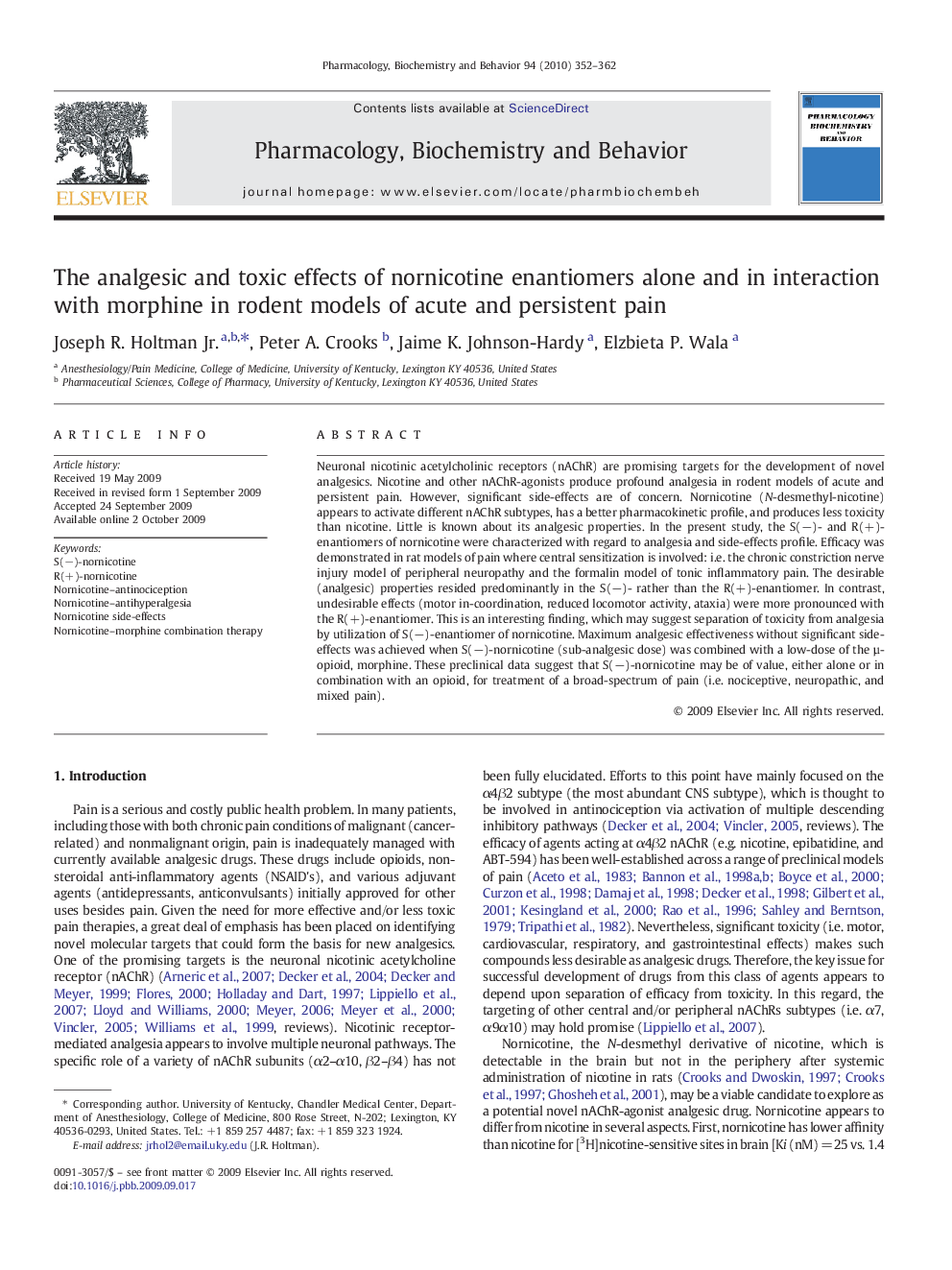| Article ID | Journal | Published Year | Pages | File Type |
|---|---|---|---|---|
| 2013179 | Pharmacology Biochemistry and Behavior | 2010 | 11 Pages |
Neuronal nicotinic acetylcholinic receptors (nAChR) are promising targets for the development of novel analgesics. Nicotine and other nAChR-agonists produce profound analgesia in rodent models of acute and persistent pain. However, significant side-effects are of concern. Nornicotine (N-desmethyl-nicotine) appears to activate different nAChR subtypes, has a better pharmacokinetic profile, and produces less toxicity than nicotine. Little is known about its analgesic properties. In the present study, the S(−)- and R(+)-enantiomers of nornicotine were characterized with regard to analgesia and side-effects profile. Efficacy was demonstrated in rat models of pain where central sensitization is involved: i.e. the chronic constriction nerve injury model of peripheral neuropathy and the formalin model of tonic inflammatory pain. The desirable (analgesic) properties resided predominantly in the S(−)- rather than the R(+)-enantiomer. In contrast, undesirable effects (motor in-coordination, reduced locomotor activity, ataxia) were more pronounced with the R(+)-enantiomer. This is an interesting finding, which may suggest separation of toxicity from analgesia by utilization of S(−)-enantiomer of nornicotine. Maximum analgesic effectiveness without significant side-effects was achieved when S(−)-nornicotine (sub-analgesic dose) was combined with a low-dose of the µ-opioid, morphine. These preclinical data suggest that S(−)-nornicotine may be of value, either alone or in combination with an opioid, for treatment of a broad-spectrum of pain (i.e. nociceptive, neuropathic, and mixed pain).
